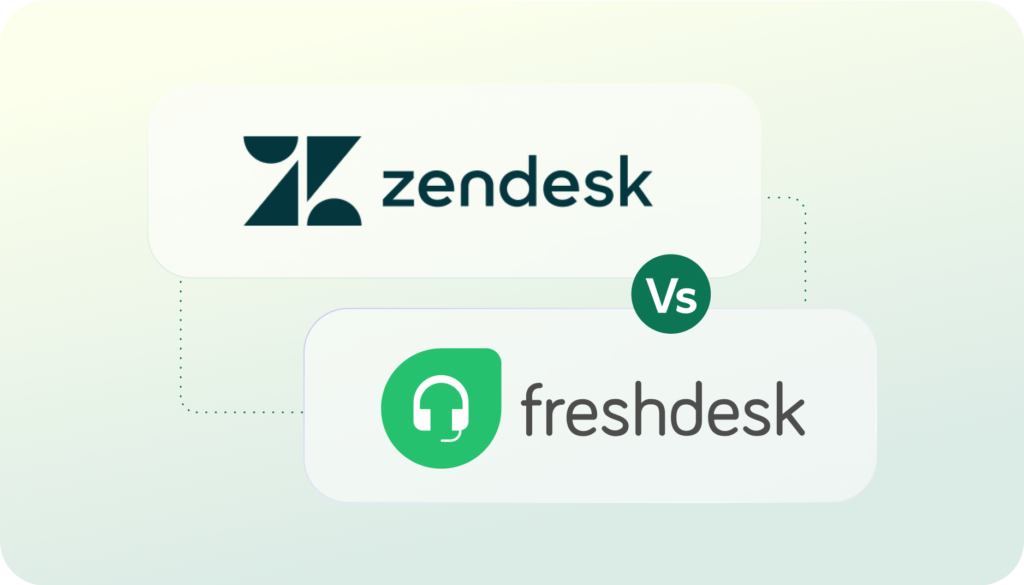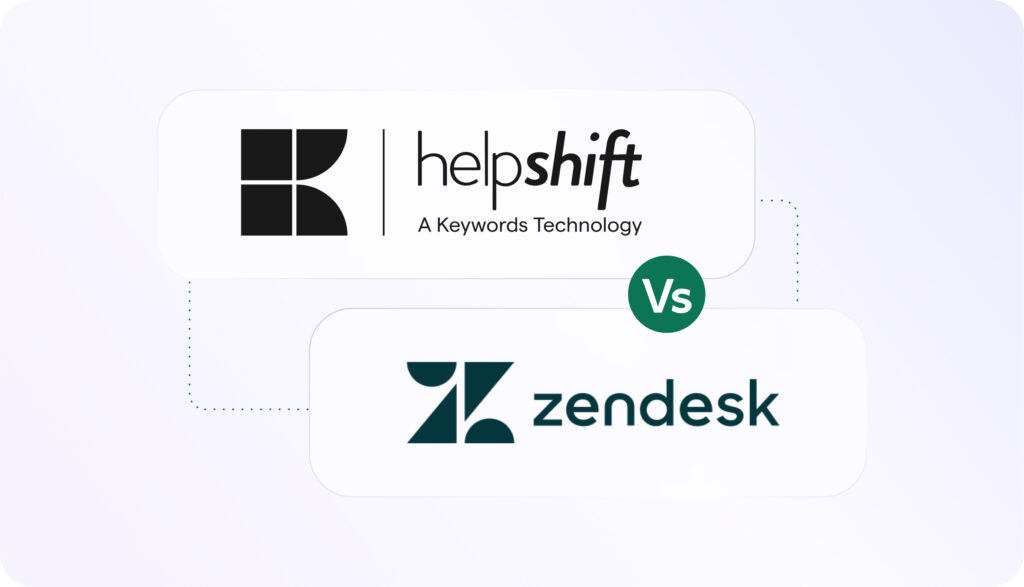A help desk is any centralized platform that provides widespread customer and employee support across different channels. An enterprise help desk is much the same, only designed to support large-scale corporations. In any case, a help desk is a fundamental element of both internal and external customer service.
What Does a Help Desk Do?
Help desks can hold different definitions and have different core functions depending on the company in question. However, they are commonly associated with IT and technical support where errors and bugs are most prevalent.
For digital-first companies, a help desk mainly refers to the software platform used to manage multi-channel customer service workflows. Help desk software often includes a suite of tools that synchronize across channels and systems, centralizing all records and data into one location. This way, customer service agents can have one single, complete view of their customers.
Sought-after features include:
- Self-service features (eg help bots or knowledge bases)
- Issue tracking
- Ticket management
- Automation (eg issue routing and repetitive tasks)
- Support across channels
What Are the Benefits of a Help Desk?
Help desks carry a range of benefits for every sized business. Ultimately, the aim is the same: to solve the challenges of customer service and support company growth. Here are some of the main reasons why help desks are important:
Customer and employee satisfaction
A staggering 90% of customers rate “immediate” (ie less than 10 minutes) customer service responses as important or very important to their overall experience. Satisfied customers are those customers who receive easy resolutions to their problems. Issuing faster responses and providing faster resolutions (whether through self-service or escalating to an agent) is, therefore, key to happy customers. Having a good help desk solution in place solves these customer expectations.
Adding to this, a help desk isn’t only in place to support customers. Employees can also benefit from having the right solutions in place to enhance the support experience. Great customer service can have a positive impact on employees too, helping to boost job satisfaction.
Efficiency and productivity
Customer service teams are in place to support a lot of customers in a lot of ways. Customers should not need to be left waiting while agents deal with another request, it’s therefore important to maximize efficiency wherever possible. A help desk can do precisely this by streamlining workflows.
Help desk software such as Helpshift provides automated issue detection and routing to ensure all issues are organized and directed to the most appropriate agent or resource. While human agents deal with the more complicated issues, bots are in place to collect issue details from the customer and either direct them to the appropriate resource or knowledge-base (and help them to self-serve more effectively) or escalate the issue to the appropriate human agent. This also allows issues to be addressed at any time of the day, even while agents are asleep. This way, resolutions are faster, and agents can effectively resolve more tickets in one session.
Enterprise growth
All of the above work to strengthen customer relationships – an important factor in the long-term success of a business. Business growth depends on customer retention as much as customer acquisition. If a customer is left dissatisfied or unsupported, there is every chance they will leave. With an effective help desk solution, a company can work to maintain its growth.
Help Desk Metrics
How can the effectiveness of a help desk be measured? With customers expecting fast and effective service, a company needs to know how its offerings compare. Help desk metrics are incredibly valuable for shedding light on customer service performance and highlighting possible areas of improvement. After all, something that cannot be measured cannot be improved. Here are some of the most useful metrics:
Ticket volume
Knowing how many tickets and conversations go through a customer service team in a specific period of time can provide a lot of insight. It can help to indicate peak times for support requests which is useful for managing workloads. Not only this but analyzing what the nature of the support requests are and where they are routed can provide a clearer picture of overall efficiency.
Reviewing ticket volume also provides an opportunity to look at the rate of ticket completion. This technically encompasses two help desk metrics – the number of tickets opened, and the number of tickets closed. These two should be regarded in relation to each other and, in an efficient help desk, should be more or less equal. A large discrepancy between the two suggests the need for more team members or more efficient processes.
Response time and resolution rate
Customers expect fast, seamless customer service experiences and a fast response time is a key way of demonstrating this. Faster first responses lay the foundation for more fruitful customer relationships by setting high expectations early on. Internally, fast response times also indicate that issues are being dealt with immediately and effectively.
By reviewing the issues that yielded the slowest responses and the longest time to solve, a company can improve its future service by ensuring its issues are prioritized more effectively going forward. If resolution rates are dipping, it can also signify the need for agent redistribution as well as the need for automated technology such as chatbots to ensure there is 24/7 coverage.
Backlog
As well as looking at how many issues are being resolved, it is also important to know how many are not. If the backlog is substantial, this can spell out the need for change. A high number of tickets being left unresolved ultimately shows that a team lacks the capacity to address every customer issue. In this case, it is vital to look towards streamlining. In some instances, backlogs may also be the result of poor ticket management. Automation is the answer here, helping with query routing, simple issue resolution and expediting repetitive tasks.
Customer satisfaction
Customer satisfaction (CSAT) can have a noticeable impact on sales. When customer expectations are met and succeeded, customer retention increases. This, in turn, helps with growth. CSAT is thus incredibly important for the long-term success of a business enterprise.
Best Practice For Help Desk Management
Help desks are the cornerstone of every customer service team, but it can only do so much by itself. Help desk management is crucial for optimizing the use of help desk software, ensuring the system in place runs as smoothly as possible. Below are tips for maximizing the use of a help desk:
Tickets
Every interaction should result in a ticket. This way every issue, no matter how minor, can be tracked. Tickets also work as a source of data, providing companies with an up to date view of every problem a customer has had. This way, service can be tailored going forward. In a multi-channel age, tickets ensure a more seamless experience for customers moving between channels of communication.
Transparency
To build a rapport with customers, a company must operate with transparency. Good rapport, in turn, leads to stronger and longer lasting relationships. A help desk platform should simplify a company’s approach to honesty by improving communication opportunities. With automated issue updates, a customer can be kept informed of progress without needing to be in direct contact with an agent. This not only helps to save agent time, but it also creates trust.
Prioritize user experience
Keep the user/customer at the forefront of decision making. Creating an experience that is meaningful, engaging and simple to navigate is an easy way of winning over long-term, happy customers.
Help desk experiences should address the customers it serves, which is why feedback is so important. Submitting an issue, reporting a problem, asking a question or otherwise interacting with a customer service representative should be made as quick and convenient as possible. Helpshift help desk features use AI that is continually learning and improving based on feedback, ensuring core processes are keeping in step with evolving customer needs.
Improve rather than invent
Help desk solutions should integrate and improve existing processes. One of the biggest mistakes a company can make is to overhaul systems that both customers and employees are already familiar with in favor of something brand new. Help desks should be used to streamline and optimize customer service workflows, facilitating more productive ways of connecting with customers.
Improving Help Desk Metrics with Helpshift
Automation is crucial for modern, digital-first customer service teams. Good help desk software now includes some elements of automation to enhance the customer experience. A recent survey found that CSAT scores were four times more likely to improve in a company with automated customer support.
Helpshift is providing the tools customer service teams need to meet and surpass customer expectations for fast, frictionless and personalized support. As soon as a ticket is created, AI-powered automated classification ensures the issue is routed to the correct level. When a conversation is initiated, classification begins with bots being used to collect issue information to determine whether an issue-specific bot should be seamlessly introduced or whether the issue should be escalated to a human agent. In this way, Helpshift is also empowering customers to self-serve by automatically directing them to relevant resources of the knowledge base.
Additional Help Desk Information
Products: Conversational Help
Products: Intelligent Customer Self-Service
Products: Help Bots and Automation



